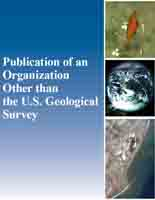Predicting sediment transport in estuarine systems requires understanding sediment settling velocity, its range of fluctuations, and the shortcomings of the tools to measure it. Previous studies have used Laser In-Situ Scattering and Transmissometry (LISST) instruments to measure particle size and Acoustic Doppler Velocimeters (ADV) to return estimates of settling velocity. We deployed both instruments over a 4-week period in summer 2016 in San Pablo Bay, CA, and observed conflicting results from the two instruments. The LISST indicated the settling velocity decreased with increasing bed shear stress, while the ADV showed that settling velocity increased. Comparing the experimental conditions from this study with previous research reveals that the ADV method requires steady state conditions that were not achieved. Although the ADV method uses easily measured quantities to return the settling velocity, it relies on assumptions that are not always valid in estuarine settings.


